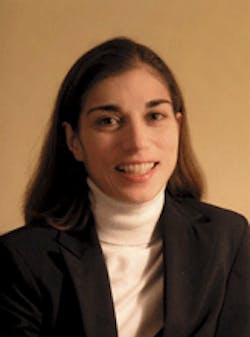SCIENCE & TECHNOLOGY EDUCATION: 2011 Physics Olympiad – Bringing together talented young students from around the world
GRACE KLONOSKI
Last month, 393 secondary school students from 84 countries traveled to Bangkok, Thailand, to vie for medals in the 42nd International Physics Olympiad (IPhO), a prestigious annual event that attracts the most talented young physics students from around the globe. The United States was represented by a Traveling Team of five students who brought home two gold and three silver medals, giving the U.S. the fifth highest total aggregate score in the competition.
The U.S. gold medalists were Brian Zhang, a senior at Henry M. Gunn High School in Palo Alto, CA, and Ante Qu, a senior at West Windsor-Plainsboro High School South, Princeton Junction, NJ. Zhang scored 8th highest overall in the competition.
The U.S. silver medalists were Lucy Chen, a senior at Ames High School, Ames, IA; Eric Speiglan, a junior from Naperville North High School in Naperville, IL, who also competed as a member of the 2010 team; and Andrew Das Sarma, a senior at Montgomery Blair High School in Silver Spring, MD. Das Sarma’s score ranked him as the second highest silver medalist in the competition.
The students were members of the U.S. Physics Team, which is selected each year in a rigorous national competition sponsored by the American Association of Physics Teachers (AAPT) and the American Institute of Physics (AIP). The selection process begins with an exam given to outstanding science students from around the country that includes such upper-level skills as the Lagrangian Formula of Mechanics, Differential Calculus for Electricity and Magnetism, and Complex Variables. The 400 top scorers advance through quarter-final and semi-final rounds, resulting in a final team of 20 students.
The 2011 team prepared for the IPhO at a 10-day training camp held at the University of Maryland-College Park. The students were coached on difficult physics concepts through classes, labs, and special lectures; they then took a series of exams to select the Traveling Team. The traveling team members returned to College Park for three days of additional laboratory work to prepare them for the international competition.
In addition to learning the equivalent of a year of physics in under two weeks, training camp participants visited their congressional representatives on Capitol Hill, met with physicist and Nobel prize winner Carl Wieman of the White House Office of Science and Technology Policy (OSTP), had a photo opportunity at the Albert Einstein statue at the National Academy of Science, and met NASA scientists Jonathan Gardner, Chief, Observational Cosmology Laboratory, and Neil Gehrels, Chief, Astroparticle Physics Laboratory.
All IPhO national delegations are composed of a maximum of five student competitors plus two leaders, selected on a national level. Observers may also accompany a national team. The students compete as individuals, and must sit for intensive theoretical and laboratory examinations. The theoretical examination lasts five hours and consists of three multi-part questions. The five-hour practical section consists of one or two laboratory examinations.
Students may be awarded gold, silver, or bronze medals or an honorable mention. In 2011, four countries—Taiwan, China, Singapore, and Korea—won five gold medals each, giving them aggregate total scores above the U.S. Six countries won three gold medals: Hong Kong, India, Japan, Thailand, Kazakhstan, and Slovakia.
The first International Physics Olympiad was organized in 1967 in Eastern Europe. Western nations began competing in the 1970s, and the U.S. Physics Olympiad Program was started in 1986 by AAPT to promote and demonstrate academic excellence through preparation for and participation in the International Physics Olympiad. It continues to be supported as a joint initiative between AAPT, AIP, and the member societies of the American Institute for Physics: Acoustical Society of America, American Association of Physicists in Medicine, American Astronomical Society, American Crystallographic Society, American Geophysical Union, American Physical Society, AVS – Science and Technology of Materials, Interfaces, and Processing, The Optical Society, and the Society of Rheology.
The OSA Foundation (OSAF) was established in 2002 to support philanthropic activities that help further the Optical Society's (OSA) mission by concentrating its efforts on programs that advance youth science education, provide optics and photonics education to underserved populations, provide career and professional development resources and support awards & honors that recognize technical and business excellence. The grants funded by the OSA Foundation are made possible by the generous donations of its supporters, as well as the dollar-for-dollar match from OSA. For more information, visit www.osa-foundation.org.
Grace Klonoski is the senior director, Foundation, Membership & Education Services for the Optical Society of America, 2010 Massachusetts Ave, NW, Washington, DC 20036; e-mail: [email protected]; www.osa-foundation.org.
